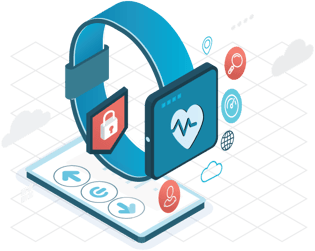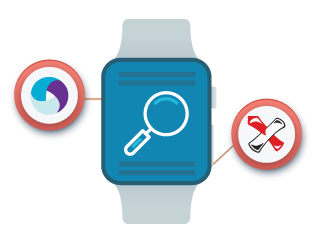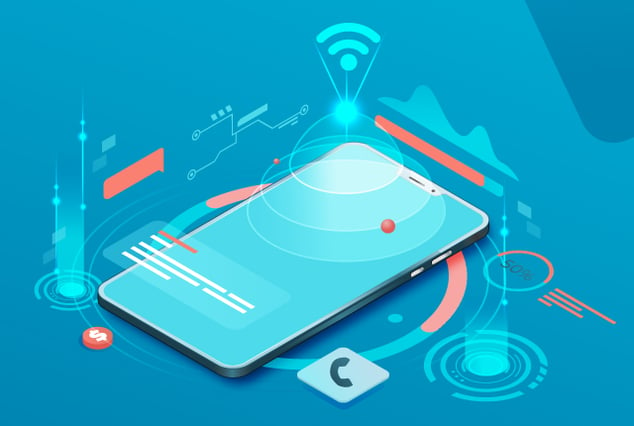
The world is changing rapidly and wearable devices have become increasingly popular. With the rise of smartwatches, fitness trackers, and other types of wearables, it is important to ensure these devices are reliable and secure. Testing wearable devices and their associated ecosystems are essential to guarantee their functionality and security. It is important for companies to have an organized approach to testing to guarantee their success in the market. Companies must develop testing strategies that cover the entire wearable device ecosystem from hardware to software, as well as any associated third-party services. Testing wearable devices and their ecosystems is a complex process, but it is essential to guarantee a successful product launch.
What are Wearable Devices?
Any technology that can be worn by humans is a wearable device. In other words, Wearable devices are also commonly known as wearable gadgets, wearable technology, or simply wearables. These smart IoT devices are designed to track biometric data from heart rates to sleep patterns, from movement to mental calmness.
The popularity of wearables has been growing like wildfire in the past few years. New wearable device innovations are pouring like raindrops now and then. Wearable devices are resolving many of the mainstream tracking challenges, starting with smartwatches, fitness trackers, AR glasses, and wearable navigation aids. As these emerge, they drastically alter the lifestyle of their users.
Number of Connected Wearable Devices
Source: Statista
The characteristic that makes it different from other devices and helps in gaining its foothold is its "presence". Once these devices are worn on a body they are constantly connected wherever you are.
Wearable Devices in the Market
It is essential to test wearable devices and their ecosystems to ensure their functionality and security. Here are some examples of wearable devices you can find on the market:
Testing Coverage and Types
Before testing any application on the wearable gadget the scope of the test should be clear in the mind of the testers. And this scope includes the list of platforms and devices the gadget should work with:
-

Functional Testing
While testing a wearable device or app, the testers need to cover all functionality on tiny screens of the wearable devices. The primary goal of testing the touch functionality of wearable devices is to make sure that all functionality works well and behaves user-friendly. Touch navigation and responsiveness are the majority that how it works in real-time.
-

User Interface Testing
UI testing ensures that all actionable items - sensors, checkboxes, buttons, etc work perfectly on the wearable.
-

Compatibility Testing
To make sure that the application works on all gadgets and is compatible with various devices & OS versions.
-

Usability Testing
Every app aims to make sure that the end user should get the best experience while interacting with Wearable devices. To increase the user experience users should get Easy access to a product, Clear navigation, Easy processes, Vibration notification, Mirror of the visual elements linked to the devices, etc and the list goes on.
-

App Connectivity Testing
Testers need to test the network connectivity with network fluctuations and disconnections, and obsolete configurations caused by network configuration changes.
-

Security Testing
Security and Privacy concerns of wearable devices are mostly about the user data being manipulated, insecure communication, physical retrieval of data, use of wearable tech (like hidden microphones, cameras, etc) for spying, lack of encryption, and other vulnerabilities.
-

Biosensors Testing
Biosensors allow patients to move easily and still collect vital data with their physical activity of heart rate, temperature, and respiratory rate.
Involved Tools and Technologies

QASource is solving major challenges of the wearable testing sphere by focusing on all components of testing using multiple tools:
- Appium: It is the open-source automation framework that supports the automation of Android wearable devices using emulators and direct device connection.
- Ranorex: It allows testing of both iOS and Android devices. Along with scripting it also allows a record and play feature.
Conclusion
The spike in the usage of wearable gadgets and the dependencies they have on other entities indicate the value of testing both the functional and non-functional aspects of wearables. We at QASource provide our services to multiple clients with wearable testing requirements by validating each aspect of the wearable device, its applications, and the connectivity with the parent mobile device. We aim to always ensure that the end user is delighted with the profound experience. Find out more about testing services at QASource today.
Have Suggestions?
We would love to hear your feedback, questions, comments and suggestions. This will help us to make us better and more useful next time.
Share your thoughts and ideas at knowledgecenter@qasource.com
